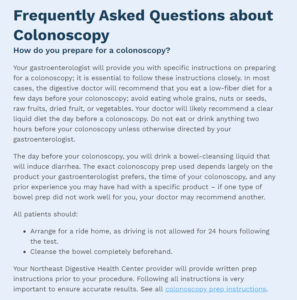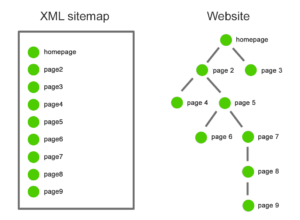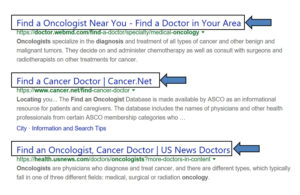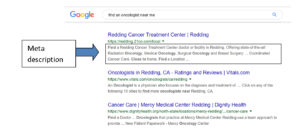
Ranking at the top of the SERP isn’t easy for competitive healthcare search terms. Learn the top tactics that’ll help you improve search rankings and drive more organic traffic.
According to one survey, almost 90% of patients use Google for medical information before visiting their doctor. This amounts to about one billion health-related questions being researched daily on Google. So it’s no surprise that search engines continually optimize and focus on making healthcare options more accessible for everyone.
We asked our SEO team to pinpoint the factors that have the highest impact on improving the rankings of healthcare websites. Our team determined the most critical factors to improve rankings; they’re listed below in order of importance.
This is the definitive go-to list of action items you should prioritize to improve search visibility.
First, a little context on why web page optimization for search is so important.
Google’s recent Helpful Content Update penalizes unhelpful content. This includes everything from duplicate content to thin, clickbait, and hard-to-find content. AI-powered tools (used, for example, with internal linking and keyword selection), as well as website security threats, inaccurate information, poor user experiences, and a poorly designed site architecture can all prevent searchers from reaching your pages and/or finding the information they need on your pages. These can all lead to penalties from Google and lower SERP rankings, and if people cannot find you, you will be unable to generate leads and book appointments.
Irrespective of the ranking issues your organization may face, the strategies below can help improve your SERP rankings. When improved iteratively, they will form the basis of a robust SEO-based ranking strategy that will keep you in front of the searchers looking for your services.
Learn more about top SEO trends impacting the healthcare industry in 2023 here.
Thin content is low-quality content or shallow pages that provide little to no added value to your visitors. Thin content typically does not answer the search query or fulfill the intents of visitors. Thin content also does not follow the E.A.T. model: Expertise, Authoritativeness, and Trustworthiness for all content.
As we discussed in our in-depth discussion on Google’s Helpful Content Update and based on our team’s findings, the best methods for doing this are as follows:

Adding an FAQ section to a webpage allows you to address common questions and can help you rank for niche long-tail keywords.
You can learn more about improving thin content here.
Website architecture refers to the relationship between web pages. This is often determined by URL taxonomy, main navigation, and links between pages. Search engines use a website’s architecture as a blueprint to understand how pages relate to each other and what the most important pages may be on a website. Website architecture also gives search engines important clues as to what a website is all about.
According to our SEO experts, the best ways to optimize the URL structure and site architecture of your pages are to:
Other architecture optimizations you can use are to:

You can learn more about site architecture at our helpful guide here.
Headers are important for many reasons. They help to break up long-form content, thereby making it easier to read. They also help the user and Google understand what the content is about and how it is organized. Headers are assigned different tags based on the order of importance.
Site speed is an important SEO ranking factor for Google. The faster your website is, the higher the chances you have to rank higher in the SERP. This applies to both desktops as well as mobile devices.
Our experts recommend the following for improving site speed:
Additional strategies you can implement to improve site speed can be found here.
A title tag is an HTML element that specifies the title of a web page. A page’s title tag is displayed as part of the search snippet in a search engine results page (SERP).
Best practices to use here include:

When it comes to meta descriptions:

Internal link checking is a broad practice that checks internal link response codes that allow search engines to discover new pages and better understand the relationship between existing pages.
Internal linking can help you improve rankings for more relevant search queries and the distribution of internal links throughout a website. They are also an excellent way to add link authority to pages on your site.
The best practices to keep in mind here are as follows:
An expert writer is someone who is skilled in writing web content on domain- or industry-specific topics. They can produce high-quality content within their medical niche. This helps you cultivate a reputation for expertise and trustworthiness, which is vital in healthcare. It’s also a massive signal to Google that your site should rank more highly on the SERP, as it has unique and high-quality content.
Publishing expert content can also help you earn links, a practice known as link earning.
With link earning:
Earned links help you get listed higher in the Search Engine Result Pages, which is especially true if the earned link is from a legitimate and reputable site that will increase the authority, value, and trust of your brand. Therefore, when trustworthy sites link to your website, you can expect Google and other search engines to reward you for this by boosting your relevance in the SERP.
Some of these recommendations go without saying, such as focusing on creating quality and engaging content, avoiding keyword stuffing, having an easily navigable sitemap, and linking to the right pages, content, and information while adding relevant images and alt text. Others may not be so obvious, such as developing additional pages for specific niches or service areas and revamping thin content you may already have spent money on.
Taken together, however, these recommendations can help you be a more valuable and discoverable resource to your target audiences. It starts with top rankings and organic traffic, then the high-quality content on your website will persuade users that you’re the best provider for them.
Rome wasn’t built in a day, though. So we recommend you start at the top of our list and focus on the optimizations that will be easiest for you to implement. Creating an SEO roadmap can help you plan out the optimizations and track their progress and impact throughout the year.

Alex Membrillo
CEO
The original version of this page was published at: https://www.cardinaldigitalmarketing.com/healthcare-resources/blog/seo-tactics-to-improve-rankings/
As a leading healthcare digital marketing agency, Cardinal Digital Marketing has partnered with some of the most recognizable brands in the country. We’ve helped countless multi-location organizati... Read more
When evaluating SEO performance, multi-location brands face a number of common challenges. In this blog post, we explore these challenges, while laying out a three-step approach to ...read more
Maximize your PPC budget and improve campaign performance by tackling six low-hanging fruits that bring immediate results.Over time, it’s easy for inefficiencies to creep into ...read more
AI is an incredibly powerful tool for healthcare marketing and has already started to transform the industry. When many people think of AI, they think of generative AI like ChatGPT. ...read more
New patient acquisition is always a priority, but what about your existing patients? Reactivating patients is one of the most effective ways to drive new revenues at a practice.We ...read more